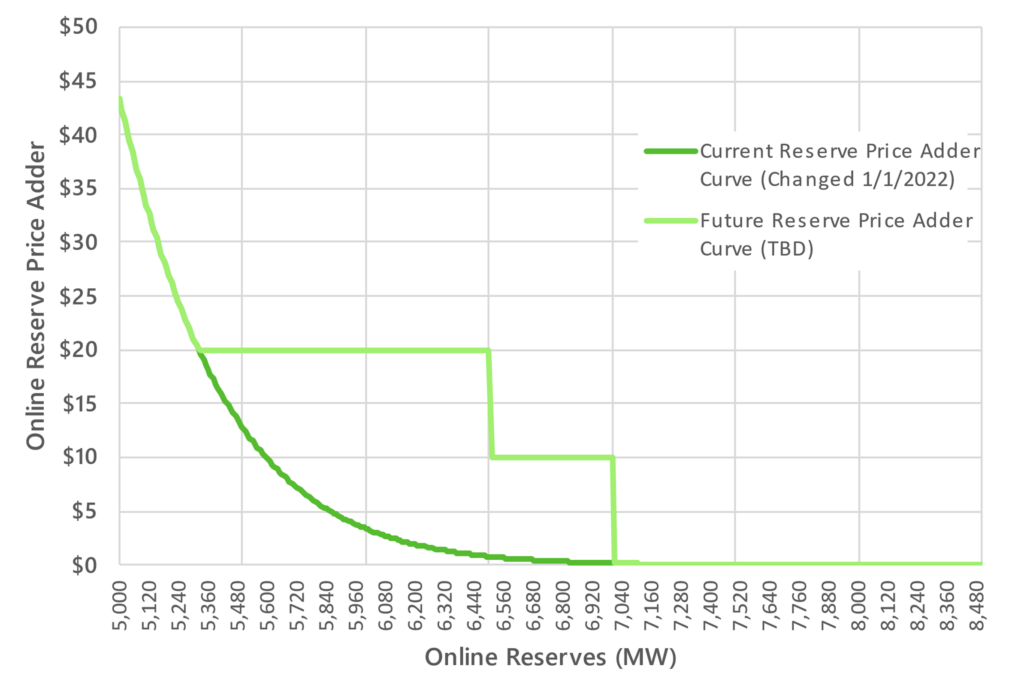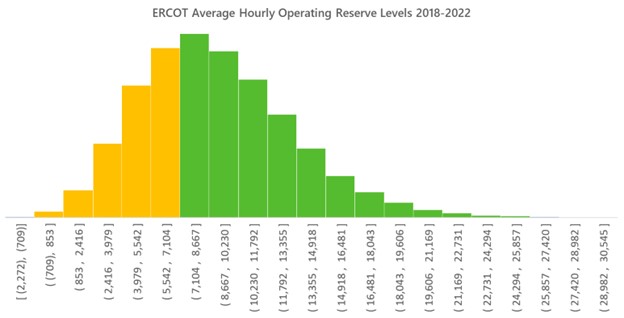Performance credit mechanism
In a decision that could reshape Texas’ power market, The Public Utilities Commission of Texas (PUCT) voted Jan. 17 to adopt the performance credit mechanism (PCM) market design, a strategy developed by consultant E3 in partnership with the commission. The PCM mechanism aims to provide payments to power units that are available during peak conditions, incentivizing reliable capacity and retaining generator assets at risk of retirement. Although resembling capacity mechanisms in deregulated markets such as California’s CAISO, the PUCT emphasized that PCM is not a capacity market feature.
Bridging solutions
As the PCM market design takes shape, discussions have focused on bridge solutions for the transition given that the redesign will take several years to implement. With the long timeline, the Electric Reliability Council of Texas (ERCOT) board recently voted in conjunction with the PUCT to enact a bridging mechanism. The bridging solutions involves changing of the operating reserve demand curve (ORDC). In lieu of a capacity market like most other deregulated independent system operators (ISO), the ORDC mechanism adds money to ERCOT’s real-time prices when the buffer of capacity available to react to large system disturbances fall below a certain reliability limit. This buffer of online idle generating capacity is often called operating reserves, or online reserves.
Historically, these adders were a function of an exponential curve and at higher levels of reserves are mere pennies; however, as the reliability limit ERCOT establishes nears, these prices skyrocket to the price cap. The changes reflect two new characteristics to the curve. At an operating reserves level (PRC) at or below 7,000 megawatts a price floor to the curve of $10/MWh, at or below 6,500 megawatts, a price floor is increased to $20/MWh.

To understand why this level is important, one can look back to historical operating conditions. This newly adjusted range is where operating reserves spend a significant amount of time exhibited in the yellow bars in the histogram below.
ERCOT expects the adjustment will add $500 million annually to the cost of power. This change has an asymmetric benefit to thermal units over renewable units which are known to push operating reserves well above the 7,000-megawatt floor. The original ORDC curve still allows prices to exceed these price floors as PRC decreases, which eventually reaches the $5,000/MWh price cap as reserves fall enough. This bridging solution is expected to take four months or longer to develop, so not a risk for this summer’s trading but will potentially impact fall/winter 2023 as maintenance outage season begins again.

More on PCM
The Texas House State Affairs Committee convened March 1 to discuss grid reliability and the proposed PCM design. The Committee heard testimonies from ERCOT CEO Pablo Vegas, Zach Ming of E3, PUCT Chairman Peter Lake and other industry representatives. As the 88th Texas Legislature Session approaches its conclusion May 29, PCM appears poised to pass with minimal additional legislative scrutiny.
Senate Bill 6
In parallel, Senate Bill 6 (SB 6), introduced Jan. 19, 2023, proposes the Texas Energy Insurance Program and the Texas Energy Infrastructure Fund, providing financial assistance for new thermal generation and infrastructure improvements. A revamped version of the “Berkshire Hathaway bill,” SB 6 aims to address reliability concerns following Winter Storm Uri by establishing 10,000 megawatts of “reliability assets” outside the ERCOT market structure. The estimated cost of $8-16 billion will be passed directly through to consumers. Eyebrows were raised as the Lower Colorado River Valley Authority (LCRA) appeared to be throwing their hat in the ring to build these units, which would likely require it to change its status from a public non-profit in charge of waterways to some unknown new business entity.
While ERCOT supports the bill for grid reliability, critics argue it may increase costs, impact the ERCOT wholesale market and limit future investment. SB 6 also restricts eligible participants for new plant construction, potentially benefiting only the largest power generators and river authorities like LCRA.
After passing the Senate Feb. 15, 2023, SB 6 is under consideration by the House Energy Resources Committee. The committee is currently considering it on agenda items and should soon begin discussions on items from the Senate given the close of the legislative session. If passed, it will proceed to the full House, Senate conference committee and, potentially, the governor’s desk.
The proposals signal a potential shift in legislators’ thinking on the Texas power markets. Historically, free and open markets have driven renewable and technology expansion. Stakeholders, including market participants, private equity firms and market analysts, are raising important questions about the bill’s implications. A key concern is the uncertainty about who would be responsible for building the next power generation plant if the bill is enacted. The outcome of these legislative efforts will shape the future of Texas power markets.
Keep your eye on the House committees and the Texas State Legislature over the coming weeks!
We discuss many important topics for power traders and developers in our Flash Publication 90-Day Reports which come out every two weeks for CAISO, ERCOT, PJM, MISO, Mid-C, NYISO, ISONE and SPP.









